The Trending Page AKA the Front Page of Steemit
Hi Everyone,
I have recently written a few posts about Steem. I have applied my economics knowledge into looking at various aspects of the platform. I have even fantasized about an alternative reality in regards to voting. Today, I want to focus on the ‘Trending’ page also known as the front page of Steemit and busy.org. I will discuss if I believe the ‘Trending’ page is operating effectively and if it is not, what can be done to improve the situation. I also discuss if the ‘Trending’ page should be the gateway to the Steem platform.
What does it mean to be trending?
This is not exactly a straightforward question. I do not know the exact algorithm used to determine the ranking of posts on the ‘Trending’ page, though I have a reasonable idea regarding the key parameters. Pending payout and age of post appear to be the most important parameters based on my observations.
A high pending payout for a post should indicate strong support from the community. This post would have received many and/or high valued upvotes. The ‘Trending’ page, in theory, should represent what is deemed the best of Steem by the community. Therefore, to have the ‘Trending’ page as the front page of Steemit appears to be a logical choice. This is a way to showcase the most highly supported posts by the community.
Users of the platform should generally feel inspired by what appears on the ‘Trending’ page; after all, this page should showcase the content that the community feels most deserving of a high payout. Those exploring the platform should feel impressed by what they see and have a desire to join the Steem community and possibly want to invest some of their own money.
My selection of terminology to describe the content I believe should be trending
I have played around regarding the best terminology to describe the content that should appear on the ‘Trending’ page. I initially used ‘quality’ content but quality does not encapsulate relevance to the broader audience; ‘quality’ is also highly subjective. I have used ‘popular’ content but that does not necessary represent what people feel deserves the highest payout. For example, a meme could be hilarious but that does not mean those who love it will give it a 100% upvote. So I have decided to use the terminology ‘content most supported by the community’ for now; I will use this or very similar terminology in this post. I feel this terminology captures what the community values and considers to add value to the Steem platform.
I believe a well-functioning ‘Trending’ page should contain content that, in general, is representative of what the community believes deserves to receive the highest payout.
What is actually happening on the ‘Trending’ page?
I used the word ‘should’ quite a bit in the previous two paragraphs when I described the ‘Trending’ page. This is because reality does not always align with what we would expect to happen. The ‘Trending’ page, in my opinion, has never showcased the content that is truly most supported by the community. I want to make it clear to the readers that I am not proclaiming the current problem to be blamed entirely on bid-bots (see, ‘Bid bots and the possible economic implications’ for explanation of bid bots), though I will discuss the current issues being caused by their extreme usage.
Why do I believe that the ‘Trending’ page does not contain content most supported by the community?
There are several reasons for the weaknesses of the current 'Trending' page. In my opinion, the main reasons are as follows:
- There is a high concentration of Steem Power with just a few accounts.
- The votes of those with very limited Steem Power have almost no impact on the value of a post.
- The community is more focused on producing content than curating the content of others.
- Steem marketing focuses more on earning from content creation than any other reason to join Steem.
- Automated voting and curation trails reduces genuine curation of content.
- Many adopt upvote for upvote strategies to increase the value of their own content (circle voting).
- Vote selling has enabled posts to gain direct access to the ‘Trending’ page without consent from the community.
- Delegating Steem Power to bid bots reaps far higher rewards and requires less effort than genuine curation.
- Negative perception, lack of curation rewards and Voting Power cost makes downvoting very unpopular.
We need to determine the extent that the above reasons are influencing the functioning of the ‘Trending’ page and determine if anything can be done to mitigate the problems being caused. Many of the above reasons are interrelated.
High concentration of Steem Power with just a few accounts
Steem is very new, it has only been around just over 2 years. A high concentration of stake with just a few people can be expected. We can expect this concentration to fall over time as Steem expands and new investors buy in. So how does this concentration affect the function of the ‘Trending’ page? A very small handful of high value upvotes from just a few Whale and Orca accounts could get a post on to the ‘Trending’ page. This does not necessarily represent the views of the Steem community but this should represent the views of those most heavily invested. It can be argued that those most heavily invested in the platform should have the largest say in terms of which posts receive the highest rewards and represent Steem on the ‘Trending’ page.
So what problem am I identifying? Whale accounts have full (up)votes at 100% Voting Power worth at least 30 Steem (I use Steem as the price of upvotes because US$/SBD values fluctuates depending on the price of Steem). Ten full upvotes a day can be considered a reasonable number of upvotes per account (ten to eleven full upvotes, depending on timing, takes approximately 24 hours for an account to return to 100% Voting Power). So a whale account can reasonably give out approximately a total value of 300 Steem in upvotes a day.
If this whale account upvotes 20 posts a day, that is an average of 15 Steem per post (50% upvote); that is very high average value. This unfortunately, is quite unavoidable if good curation has taken place. Imagine each post requires 10 minutes of the whale’s time. If half the posts meet the whale’s desired standard for upvote that means the Whale would have reviewed 40 posts. At an average of 10 minutes per post, that is 400 minutes or 6 hours and 40 minutes dedicated to curation. This is quite an unreasonable amount of time to dedicate to curating content.
Limited impact of upvotes from small accounts
At the other end of the scale, we have the large majority of Steemians with full upvotes worth less than 0.01 Steem. A post can receive a thousand upvotes from these accounts and have a pending payout of less than 10 Steem. This post will not make it anywhere the ‘Trending’ page with such a low pending payout.
The large majority of Steemians have next to no stake in the Steem platform. Therefore, it seems reasonable that they have less say in how the rewards pool is distributed. The big problem with this arrangement is that the views and opinions of the many are more likely to bring a better and wider range of content to the ‘Trending’ page. Better content on the ‘Trending’ page is going to attract more people to Steem. This is to the benefit of the most heavily invested in the platform.
The community is more content focused than curation focused
Steem is currently attracting more people for the purpose of creating content than curating the content of others. This point leads into my next point regarding how Steem is marketed. Many that arrive on Steem have hopes of becoming rich through large payouts from their posts. The ‘Trending’ page/front page of Steemit gives that impression. The reality is that only a very small percentage of content creators can make the ‘Trending’ page without either very high self-votes, whale votes, paid votes or a combination of any of these. This is not apparent as most new users do not understand bid-bots when they first arrive to the Steem platform.
As mentioned in the previous point, curation is not very attractive as uninvested user’s upvotes are worth almost nothing and the curation rewards are worth cents. Steem does not appear to attract people merely as a form of entertainment. The Steemit interface does not appear to encourage the use of Steemit as a social environment to spend time on.
A more curation focused community are more likely to invest in Steem. Curating without Steem Power brings close to no financial rewards. Curation also becomes more effective if supported by more Steem Power. I have close to 20,000 Steem Power, my full upvote at 100% Voting Power is worth about 1.13 Steem and I should earn about 0.28 Steem Power per upvote. This may not be huge but it provides some incentive. Approximately 200 upvotes from an account of my size should get a post on to the ‘Trending’ page.
Steem marketing
When I first arrived on Steemit just over a year ago, I tried to find out as much as possible about the platform. Steem was quite difficult to grasp when I first started; the concept is very different than anything I have ever encountered before. The key marketing strategy that I observed pushed the idea that producing content on Steem was going to produce high rewards very quickly. I believe this type of strategy creates a false impression and attracts people for the wrong reasons.
A far more appropriate strategy would have been to market Steem from multiple angles. The platform needs quality content creators, casual content creators, entertainers, investors, curators, readers, innovators, and many other types. Marketing could have focused on the strength of Steem from the perspective of people from all these categories.
Automated voting and curation trails
Good conscientious curating can be hard work. It can also be quite enjoyable and fun. Dedicating hours every day or every other day can eventually become off-putting and difficult to maintain. Automated voting and curation trails can make this a lot easier. Using automated voting for content creators that consistently produce content to our pleasing can save time as well as allow us to reward content early to provide greater visibility. Automated voting may also facilitate laziness on the behalf of the curator. This could then lead to complacency from the content creator and result in a fall in quality. If this content reaches the ‘Trending’ page, it may have received upvotes based on the quality of previous posts rather than the quality of the post that is tending.
Curation trails can be an effective method of curation. Not everyone has the time to dedicate to curating content. Following a trail can provide more Steem Power to upvote good content and at the same not waste the opportunity to earn curation rewards for the account holder. Like with automated voting, following a trail can promote laziness and a lack of sincere curation.
There is also a dependency on the leader of the curation trail to adequately represent the views of those following the trail. Curation trails can also be used to support voting circles. The key point I am trying to make is that curation trails can push the wrong content to the ‘Trending’ page because the upvotes it has received may not represent the views of those upvoting it.
Vote-for-vote arrangements
Vote-for-vote strategies have been around long before Steem. Vote-for-vote (like-for-like, view-for-view, follow-for-follow, etc) strategies have been very ineffective on other social media such as YouTube. YouTube requires thousands of views before rewards any substantial rewards can be obtained. Even a few hundred view-for-view or follow-for-follow arrangements will not be profitable.
On Steem, this might not necessarily be the case. Vote-for-vote strategies will not be effective for small accounts but for large accounts this strategy could be quite rewarding. Image a small group of 4 whale and/or orca accounts. For this example, let’s assume the average value of upvote for this group is 50 Steem. If all four accounts agree to upvote each other, each post will have a value of at least 200 Steem (no downvotes assumed). If the price of Steem is US$1.5, each post will immediately have a pending payout of approximately 300 SBD. These post will almost certainly reach the ‘Trending’ page each time without any input from the rest of the community.
Vote selling and bid bots
So far I believe I have covered the key problems with the ‘Trending’ page prior to the arrival of bid-bots. Around mid-2017, bid-bots made their appearance on Steem. They were met with a little apprehension as there was a bit of stigma around the idea of buying votes instead of earning them with desirable content. This apprehension from many did not last long as bid-bots were becoming a useful way to promote content. I used bid-bots for several months at the end of 2017 and early 2018.
In the first half of 2018, we witnessed an explosion in the number of bid-bots. It soon became relatively easy for someone to upvote their post to the top of the ‘Trending’ page using just bid-bot upvotes. Some of these posts are so heavily upvoted that they remain on the ‘Trending’ page for over 4 days. These posts do not represent content supported by the community but rather represent one person who has decided that they want to put their post at the top of the ‘Trending’ page.
It is possible that this bid-bot upvoted content could also be supported by the community. Most of the content on the ‘Trending’ page receive a handful of upvotes from bid-bots and hundreds of upvotes from the community. Some might get the impression that the community is behind these posts. The high number of upvotes should be an indication of this support.
The ‘Trending’ page is the front page of Steemit and busy.org. Whatever post get on this page receives the most amount of visibility within the platform as well as to those just exploring the platform. Upvoting and commenting on trending posts also provides more exposure to the upvoter just as the ‘Trending’ page provides more exposure to the content creator.
Commenting and upvoting posts on the ‘Trending’ page is also easy. To do so involves no searching for content. I can also envision some herd mentality taking affect as well. Some people upvote simply because other people are upvoting this content. Some users also believe that upvoting content on the ‘Trending’ page will provide higher curation rewards; this is rarely the case.
Another possible reason for the 'Trending' page posts receiving a high number of upvotes is because of 'front-running'. 'Front-running' is a method of earning higher curation rewards by upvoting ahead of a large upvote. A high upvote from a bot can be predicted using steembottracker.com. All someone needs to do is upvote a post that has a very high bid to a bid-bot. This upvote needs to be made before the bot makes its bids for the existing round of bidding.
Delegating Steem Power to bid-bots
Most of the bid-bots gain the strength of their upvotes from delegated Steem Power. Bid-bots are very inviting to investors because of the high returns (In terms of SBD or Steem anyway). Bid-bots offer a far better return than curation rewards which is around 25% of the pending payout and possibly a lot lower when the price of Steem rises (see, my post ‘Bid bots and the possible economic implications’ for a more detailed explanation of why this happens). If the amount of delegated Steem Power to bid-bots was far less, posts would struggle to make the ‘Trending’ page purely on bid-bot upvotes.
The large amount of Steem Power delegated to bid-bots also reduces the amount of Steem Power available to upvote content to the ‘Trending’ page organically. So we can see a double negative effective caused by the amount of delegated Steem Power to bid-bots.
Downvoting is taboo
Downvoting has a bad reputation on the Steem platform as downvoting is perceived as taking money away from someone. This common perception is not accurate. Downvoting is the removal of potential rewards from someone and then reintroduced into the rewards pool. The available rewards is not changed by downvotes just the distribution of these rewards.
The bad reputation as well as zero curation rewards from downvotes makes them unpopular with most Steemians. An unwillingness to downvote content that is believed to be overvalued is going to result in this content remaining high on the ‘Trending’ page.
Can these problems be solved?
This is not an easy question to answer. There a number of possible solutions. I have discussed solutions in regards to the bid-bots in two other recent posts; see ‘Bid bots and the possible economic implications’ and ‘Changing the way voting works to improve fairness and rewards – My little fantasy’. The latter of these two posts also discusses some possible solutions to other identified issues relating to self-voting, low value of upvotes for majority of Steemians, voting circles, and high concentration of Steem Power with just a few accounts.
The current bad perception of downvoting is part of the existing Steem culture and cannot be tackled with directly. Though, downvoting will likely become more acceptable if the distribution of rewards does not move towards content supported by the community. I personally do not think downvoting is a great approach to the current failing of the ‘Trending’ page. Using available Steem Power to reward content that we like is far more productive. Unfortunately at the moment, downvoting is one of the very few tools we have to express our displeasure with what is appearing on our ‘Trending’ page.
Trending algorithm
How about a solution that focuses on the ‘Trending’ algorithm? As I mentioned earlier in the post, pending payout and age of post appear to be the most important parameters in the ‘Trending’ algorithm. Should these parameters be the most important? I believe both pending payout and age of post are important parameters but there are several other parameters that could play a larger role. Here is a short list of other parameters that could have a greater weighting in the ‘Trending’ algorithm.
- Number of upvotes
- Number of downvotes
- Number of comments
- Number of views
- Changes in pending payout value
The first four on the list are quite self-explanatory. The fifth additional parameter I want to mention is ‘changes in pending payout value’. I have seen posts near the top of the ‘Trending’ page with close to the same pending payout value for several days. I believe the ‘Trending’ algorithm should penalise posts that are no longer increasing in pending payout value. Whereas posts with lower pending payouts, which are still experiencing a good increase in payout value should move further up the ‘Trending’ page. This would provide an indication that the exposure these post are receiving is gaining support from the community. This should also improve the quality of the ‘Trending’ page.
Should ‘Trending’ page remain the front page of Steemit?
This is probably the most important question in this post
Even if the problems identified in this post could be fully resolved, I do not believe the ‘Trending’ page should be the front page of Steemit or busy.org. I believe a better approach would be to have an interface that can be used to find the type of content a user actually wants to see. At the moment, Steemit has tags on the left hand side of the page. From what I have observed, it appears that these tags are not particularly popular with users. I would suggest that Steemit has a front page containing apps that can take the users to different places on the platform.
There could be an app to take users to Steem apps where users can go directly to Dtube, DLive, Zappl, Utopian-io, Steepshot, Dmania, etc, etc. There could be another app to take users to broad categories (communities if that ever happens) such as travel, cryptocurrency, news, photography, art, video, contests etc. I would also suggest an app that will take user to their favourite tags (or whatever alternative to tags that we end up having). For me, it would be economics, contests, philosophy, and fun. I think there should be a link on the front page for announcements from Steemit Inc and witnesses. It is very important to keep the community informed of what is happening. Regular Steem posts have a limited life for visibility, some content and announcement have a much longer life and hence deserve to be pinned on an easy accessible page of their own. Below is just a quick and rough example of my idea of a front page.
Summary
I do not necessarily believe the problems on the ‘Trending’ page need to carry through as front page problems. I see the ‘Trending’ and the front page as two very different concepts with two very different purposes. The ‘Trending’ page should contain content that is most heavily supported by the community. I believe this is the content that deserves the most exposure and in the long-run will provide the greatest benefit to the Steem platform.
Thank you for spending time to read my post. I welcome any comments or feedback regarding anything I have discussed. Most of this post is based on my opinions and observations regarding the ‘Trending’ page and front page. I also welcome any alternative views on the subject matter.
Below are links to my other recent posts regarding the Steem platform. Feel free to have a read, much of the content in these posts supports the ideas expressed in this post.
Here is the link to the post ‘Bid bots and the possible economic implications’
Here is the link to the post ‘Changing the way voting works to improve fairness and rewards – My little fantasy’
Here is the link to the post ‘Steem explained by an economist’





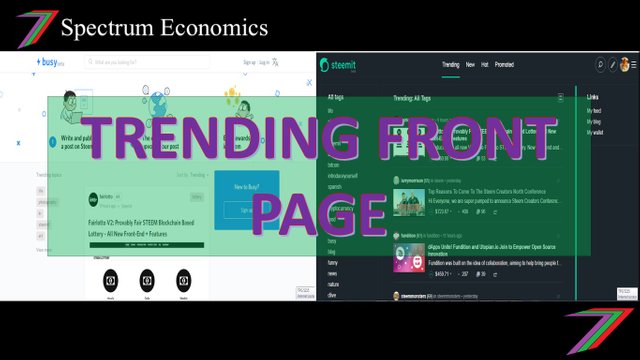





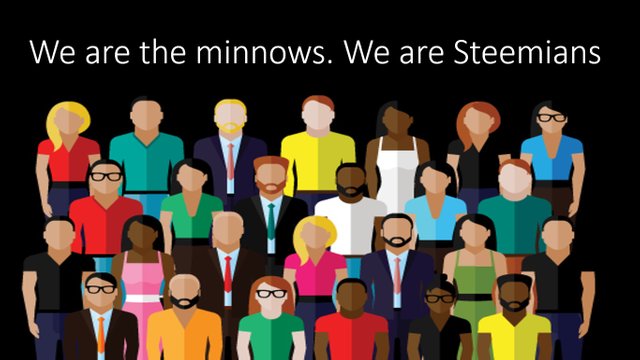
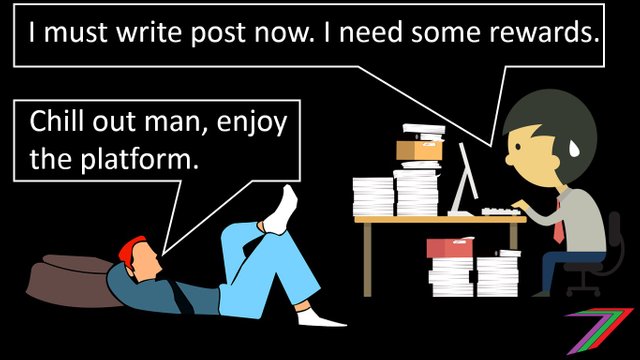




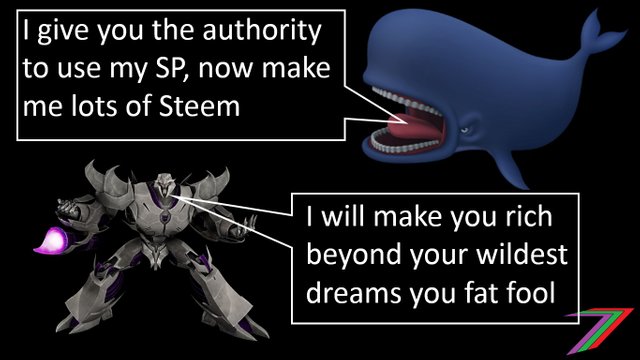

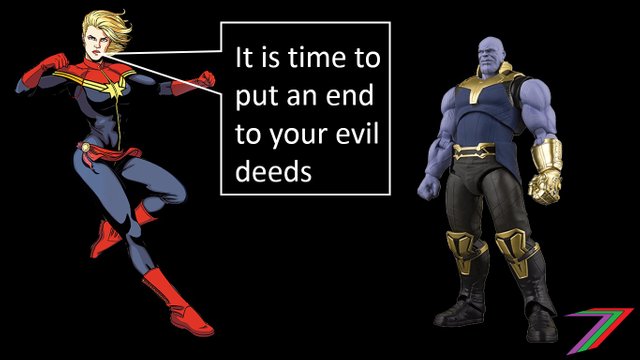


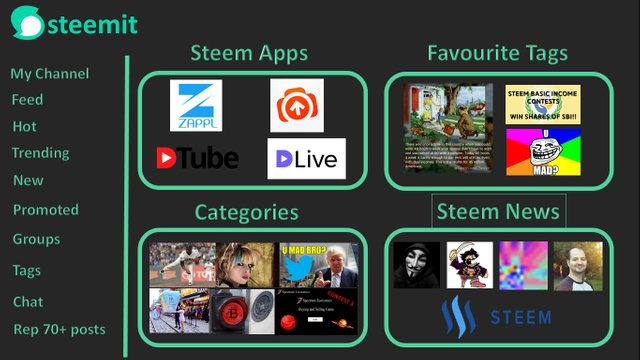


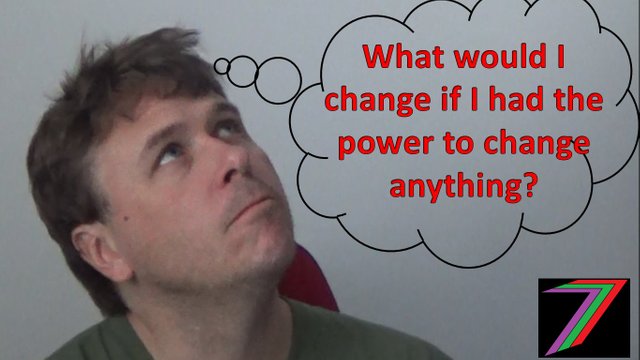

I ignore Trending, Hot, and Promoted. It took me less than a week on Steemit to figure out that those pages were meaningless and completely antithetical to quality, community-upvoted content. Steem needs to reward content that is older than 7 days. I doubt people will keep losing money to promote their content week after week. If they do, so what? Why not have moderated communities, similar to those on Facebook? I suppose SMTs might enable that.
Proud member of #steemitbloggers @steemitbloggers
It is great that you figured out the flaws in our trending and hot pages in such a short time.
Rewarding content older than 7 days is an interesting idea. I'm not sure how difficult that would be to implement and what content would qualify.
The SMTs will be interesting but I'm not sure what to expect. All will be revealed soon enough.
Well reasoned discussion - I like your idea that the front page should act as a marketing marquee - giving new users an easy way to preferred content - perhaps also with one selection being ‘Trending’ (but only if a fairer way - algorithm representative of community consensus was developed) - I enjoy curating but it is time consuming and not very rewarding currently - again, thanks for a well-written and well thought out article -
Thank you @eservicesplus. I feel the existing front page is not particularly user friendly. The Trending and Hot pages are just lists of disorganized content. I think the tags are ok. Again, much of the content under the tags is very broad and there are many tags that are not easy to find. I think a problem is that people make up their own tags and there are no fixed categories for particular content types.
Curating can be good fun. I suggested in another post to change curation rewards to 50%. In another post, I have proposed something far more radical in regards to delegating Steem Power for curation. The links to these posts are at the end of this post. You can take a look if you like.
i don't even see that page of trending its full of voting bots
Yes it is. It is very sad that people are avoiding the front page of Steemit or the trending page. That is what happens when Steem is not being represented by content the community supports.
I would like an interface to create lists of my favorite tags and/or authors similar to twitter lists or reddit multi. For example I might make a list that includes #steem, #cryptocurrency, and #bitcoin all in one feed. Another list would be #soccer, #football, and #worldcup. Is there currently a method to accomplish this?
That sounds like a pretty good idea. I think anything that helps people get to the content they want to see is a good initiative. I do not believe there is a way to currently achieve this objective.
Really it was great steemit post.upvote done
Thank you, sir. What part of the post did you most enjoy?
I have all steem, this part is really enjoyable part haha
I'm sorry, I don't quite understand your response. Thank you for the upvote anyway.
The "changes in pending payout value" metric is a great idea. Typically with bid-bot posts, there is a short burst of upvotes, then stagnation. This metric would resolve it. Maybe you should be a witness?